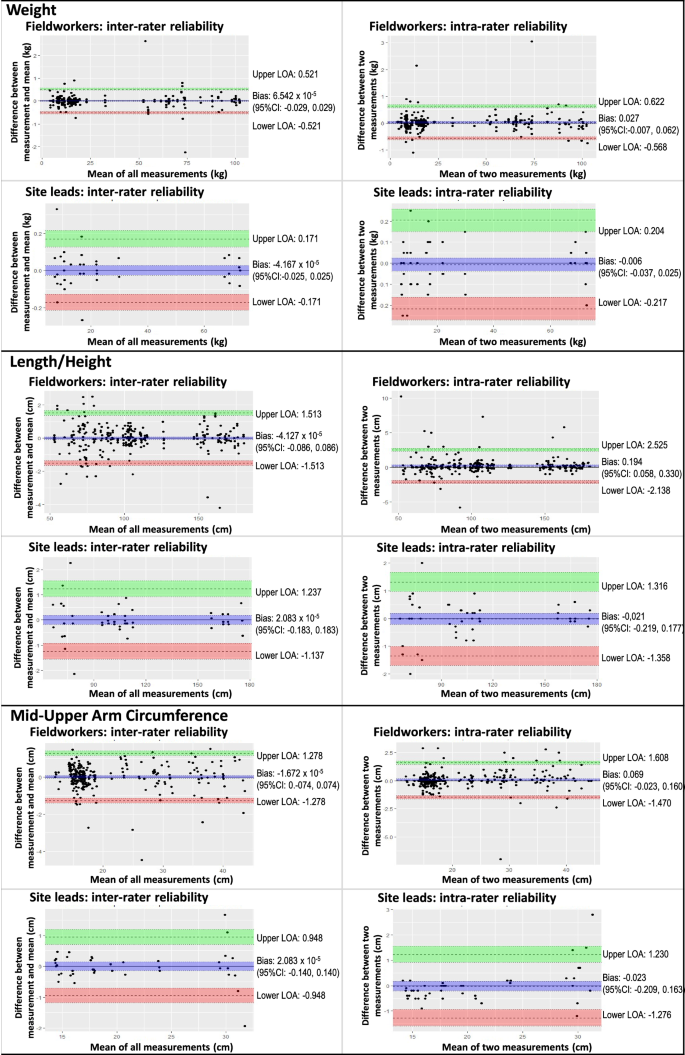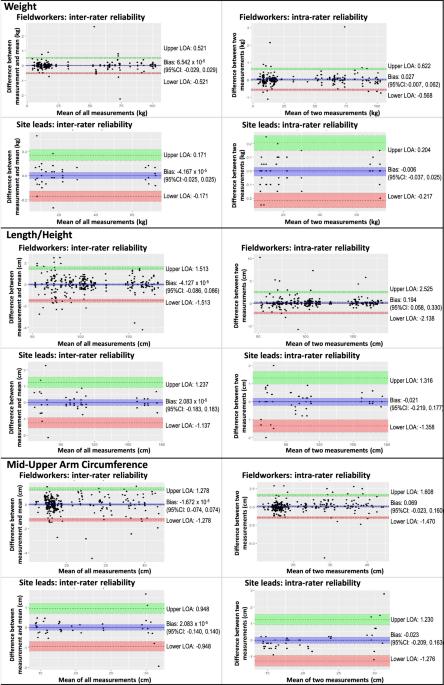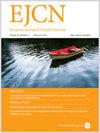Statistical assessment of reliability of anthropometric measurements in the multi-site South African National Dietary Intake Survey 2022
IF 3.6
3区 医学
Q2 NUTRITION & DIETETICS
引用次数: 0
Abstract
Anthropometric data quality in large multicentre nutrition surveys is seldom adequately assessed. In preparation for the South African National Dietary Intake Survey (NDIS-2022), this study assessed site leads’ and fieldworkers’ intra- and inter-rater reliability for measuring weight, length/height, mid-upper arm circumference (MUAC), waist circumference (WC) and calf circumference (CC). Standardised training materials and measurement protocols were developed, and new anthropometric equipment was procured. Following two training rounds (12 site lead teams, 46 fieldworker teams), measurement reliability was assessed for both groups, using repeated measurements of volunteers similar to the survey target population. Reliability was statistically assessed using the technical error of measurement (TEM), relative TEM (%TEM), intra-class correlation coefficient (ICC) and coefficient of reliability (R). Agreement was visualised with Bland-Altman analysis. By %TEM, the best reliability was achieved for weight (%TEM = 0.260–0.923) and length/height (%TEM = 0.434–0.855), and the poorest for MUAC by fieldworkers (%TEM = 2.592–3.199) and WC (%TEM = 2.353–2.945). Whole-sample ICC and R were excellent ( > 0.90) for all parameters except site leads’ CC inter-rater reliability (ICC = 0.896, R = 0.889) and fieldworkers’ inter-rater reliability for MUAC in children under two (ICC = 0.851, R = 0.881). Bland-Altman analysis revealed no significant bias except in fieldworkers’ intra-rater reliability of length/height measurement in adolescents/adults ( + 0.220 (0.042, 0.400) cm). Reliability was higher for site leads vs. fieldworkers, for intra-rater vs. inter-rater assessment, and for weight and length/height vs. circumference measurements. NDIS-2022 site leads and fieldworkers displayed acceptable reliability in performing anthropometric measurements, highlighting the importance of intensive training and standardised measurement protocols. Ongoing reliability assessment during data collection is recommended.


对 2022 年南非全国膳食摄入量调查多站点人体测量可靠性的统计评估。
背景:大型多中心营养调查中的人体测量数据质量很少得到充分评估。为准备南非国家膳食摄入量调查(NDIS-2022),本研究评估了现场负责人和现场工作人员测量体重、身长/身高、中上臂围(MUAC)、腰围(WC)和小腿围(CC)的内部和相互之间的可靠性:方法:编制了标准化的培训材料和测量规程,并购置了新的人体测量设备。经过两轮培训(12 个站点领导小组,46 个实地工作者小组)后,使用与调查目标人群相似的志愿者进行重复测量,评估了两组测量的可靠性。使用测量技术误差 (TEM)、相对 TEM (%TEM)、类内相关系数 (ICC) 和可靠性系数 (R) 对可靠性进行统计评估。通过布兰-阿尔特曼(Bland-Altman)分析,可直观地看出测量结果的一致性:根据测量误差百分率,体重(测量误差百分率=0.260-0.923)和身长/身高(测量误差百分率=0.434-0.855)的可信度最高,而实地工作者测量的MUAC(测量误差百分率=2.592-3.199)和WC(测量误差百分率=2.353-2.945)的可信度最低。所有参数的全样本 ICC 和 R 值都非常好(> 0.90),只有站点领导的 CC 评分者间可靠性(ICC = 0.896,R = 0.889)和现场工作人员对两岁以下儿童的 MUAC 评分者间可靠性(ICC = 0.851,R = 0.881)除外。除青少年/成人身长/身高测量的现场工作人员评分内可靠性(+ 0.220 (0.042, 0.400) cm)外,Bland-Altman分析显示无明显偏差。现场引导员与现场工作人员、评分员内评估与评分员间评估、体重和身长/身高测量与周长测量的可靠性都要高:结论:NDIS-2022 现场负责人和现场工作人员在进行人体测量时表现出了可接受的可靠性,突出了强化培训和标准化测量规程的重要性。建议在数据收集过程中持续进行可靠性评估。
本文章由计算机程序翻译,如有差异,请以英文原文为准。
求助全文
约1分钟内获得全文
求助全文
来源期刊
CiteScore
10.60
自引率
2.10%
发文量
189
审稿时长
3-6 weeks
期刊介绍:
The European Journal of Clinical Nutrition (EJCN) is an international, peer-reviewed journal covering all aspects of human and clinical nutrition. The journal welcomes original research, reviews, case reports and brief communications based on clinical, metabolic and epidemiological studies that describe methodologies, mechanisms, associations and benefits of nutritional interventions for clinical disease and health promotion.
Topics of interest include but are not limited to:
Nutrition and Health (including climate and ecological aspects)
Metabolism & Metabolomics
Genomics and personalized strategies in nutrition
Nutrition during the early life cycle
Health issues and nutrition in the elderly
Phenotyping in clinical nutrition
Nutrition in acute and chronic diseases
The double burden of ''malnutrition'': Under-nutrition and Obesity
Prevention of Non Communicable Diseases (NCD)

 求助内容:
求助内容: 应助结果提醒方式:
应助结果提醒方式:


